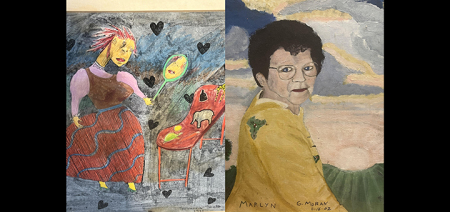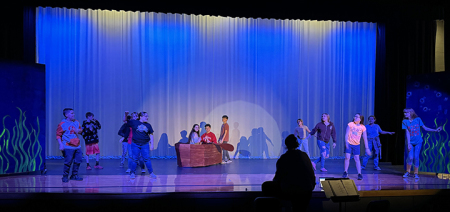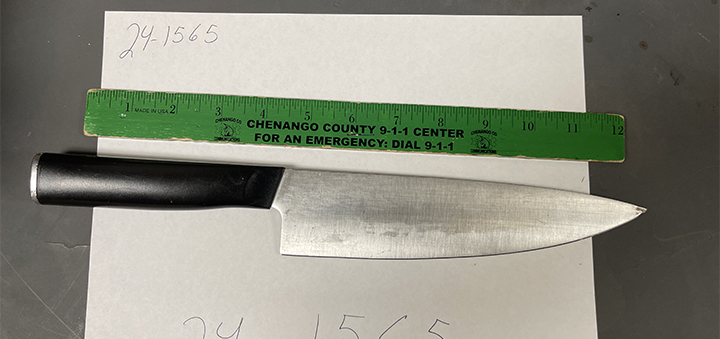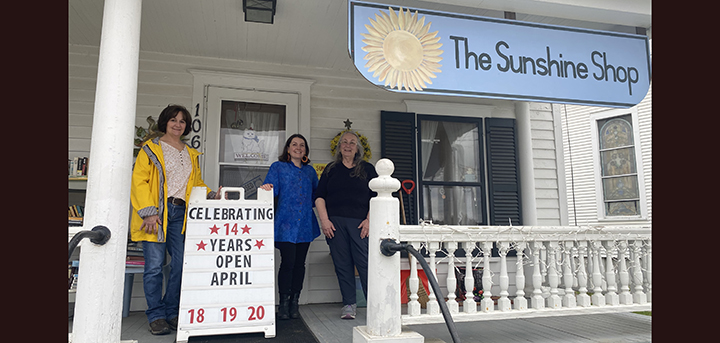A Rare Look Into The Archives
Published:
March 8th, 2012
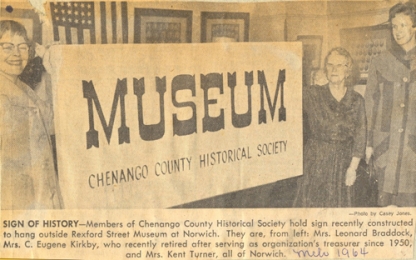
By John Antonowicz
Correspondent
This year, 2012 marks the 50th anniversary of the Chenango County Historical Society opening its doors to the public. Although known as a local corner fixture that most recall visiting in fourth grade, the society does much more than show artifacts. Behind museum doors, the Society holds the truths and greatness of Chenango County from the past. For the year of 2012, the society will publish monthly articles featuring “A Rare Look Into the Archives.” This first set of articles will span from 1958 – 1971. By searching through old meeting minutes and newspaper articles, the Society’s history emerged.
1958:
The society is interested in acquiring the old and empty Ward School #2 to house a future museum. The deal for a museum building almost falls through being voted on by the tax payers. If the school does not go to the Society, it will be sold with its sisters schools at auction. On March 10th the building is sold to the society for $1. The school is in poor condition and major renovations begin.
1962:
The old school takes four years to look presentable to the public. Since the Society was chartered in 1939, many members donated objects to board members. The objects which had been stored in board members’ barns and garages were brought to the old Rexford Street School.
After four years since the building was acquired, the Society opens its doors on July 1st with many local people attending. New York State Senator, Janet Hill Gordon, the first woman Senator in New York State from Chenango County, is quite impressed with what the society has already done. The exhibits include the first floor hall and one old classroom and span from the Revolutionary War to the early 1900s. Programs that were once held in other locations like the court house and the library, are now held at the museum. One hundred and fifty people attend a program on the Chenango Canal.
1963:
Thousands of objects are given to the society with no record of who the objects are from and what the significance of the objects are. Donors are now asked to sign off on all donations given to the museum. Margaret Plumb gives items from the late Plumb home including a charcoal drawing of Isaac Plumb Jr. who died in the Civil War, paintings of the Sherburne area by Henry Grant Plumb, and hardware made by Isaac Plumb Sr. On October 14 a large 18 foot dugout canoe is donated after being found by David Walker while frog hunting at Deer Pond in Pharsalia.
1964:
To add some curb appeal to the front to the museum building, a new sign is placed on the front of the museum. The Norwich Kiwanis Club purchases the old David Maydole Hammer Company bell that once rung for workers around Norwich, after it was scrapped at a local junk dealer’s site. The bell is soon to be displayed at N. Y. S. E. & G. Co. An old Unguentine Machine is given by the Norwich Pharmacal Company. This machine shows the old ways of making Unguentine, one of the Pharmacal Company’s most famous products used for burns.
1965:
The Old Helen Hill Reed Tuttle estate from McDonough is offered to the society, the estate includes folk art paintings and a four poster curly maple tiger bed. Six new lights are to be put in the “Art Room” for better viewing light. “Annals of Norwich” Volume 2, a book on historic Norwich homes, is printed; profits from the book will go to the roof fund.
1966:
Donations are now being accepted for a new heating system which will help preserve the collection and allow for meetings to be held in the winter. The Lyon Brook Bridge corner bridge stone is donated, dating from 1894.
1967:
An exhibit on McDonough is now on display at the museum. Eighteen windows are repaired for $127.61. The outside trims on the building are painted by volunteers. The high parts of the building are done for $150. On August 14 Ralph Spicer, Society President, raises the new flag on the new flag pole in the front of the museum, with the Norwich Lancers Boys.
1968:
On March 27 Ralph Spicer begins the roof fund by collecting money donated by local people. Dr. Barry Beyer, publishes a book on the Chenango Canal and all profits are donated to the roof fund. On June 11 a $3000 grant is given by the county for necessities that need fixing. Thanks to the city engineer, the hole in the front yard that was once covered up by a large rock has since been filled in. Broken glass windows were replaced by Mesko Glass. Giltner’s Paint and Wallpaper Co. donate paint for a train mural which will help give details on the story of Chenango County Railroads. The first Crafters Day is held with 51 vendors and 812 visitors. The day depicts how many common household chores were done in past eras. The first Railroad Day is held, and many old railroad objects from the collection are displayed.
1969:
A large telephone collection is given by Chenango & Unadilla Telephone Company to help interpret how telephone calls used to be connected. Ted Whitney has designed a new Native American exhibit which is the largest exhibit yet and is very educational. The first floor kitchen is installed by Sumner Bennington. Hart’s Electrical installs two meeting room lights and an antique chandelier in the Victorian room. The Town and Country Garden Club donate plants and shrubbery with the help from Boy Scouts. On August 21 the Assembly room is named in honor of Albert & Goldie Phillips, for their years of service to the organization. The first coffee maker is purchased with six donated books of S & H Green Stamps, which will be used at upcoming meetings.
1970:
A wooden shed is built onto the museum by Sumner Bennington. The shed is to be used as a work space. Part of a floor is installed in the attic for objects to be placed on while not on display. Wallboard is installed in the Indian Room to replace the cracking plaster walls. Seven storm windows are installed for $414.A new furnace is purchased for $1800. No smoking is declared for the safety of the collection.
1971:
41 Rexford Street, a former home, is bought for $1 and razed for the parking lot. Local troop Boy Scouts plant grass seed on the former house. The permanent projection screen is installed in the Assembly Room which is now available for meeting use. Cement is poured in the cellar. The new floor will allow for a whole extra level of exhibiting and office space. A Chenango Canal exhibit is to be built to explain how the canal influenced local businesses. An auction is to be held with objects donated by members to raise funds for the parking lot. A vacuum cleaner, 16 mm film projector, slide projector, and duplicating machine are needed by the society.
As we look back at the Chenango County Historical Society, we understand the endless amounts of effort that went into the society in order to accommodate and best serve the public. Although, the collection has increased in size, the value of educating people and preserving objects that are important within Chenango County has stayed the same. The next article will include the next 10 years of the Chenango County Historical Society’s history.
Comments

